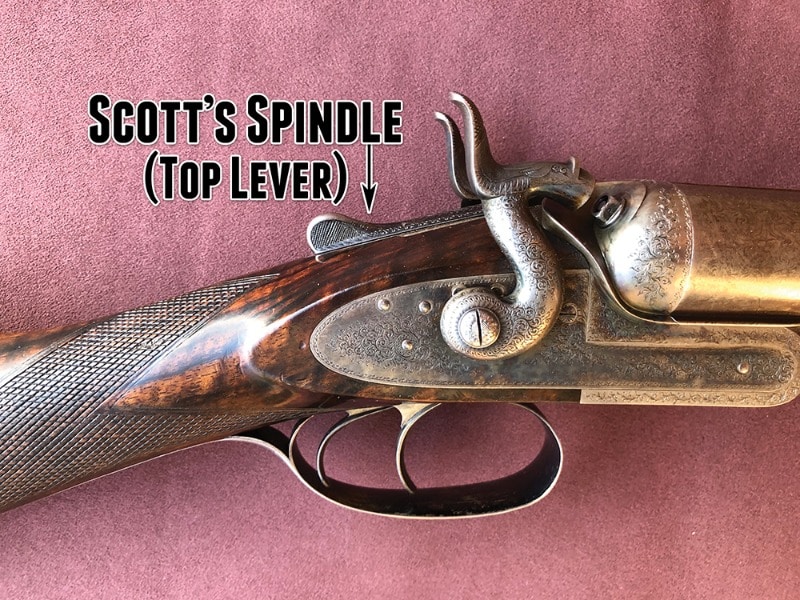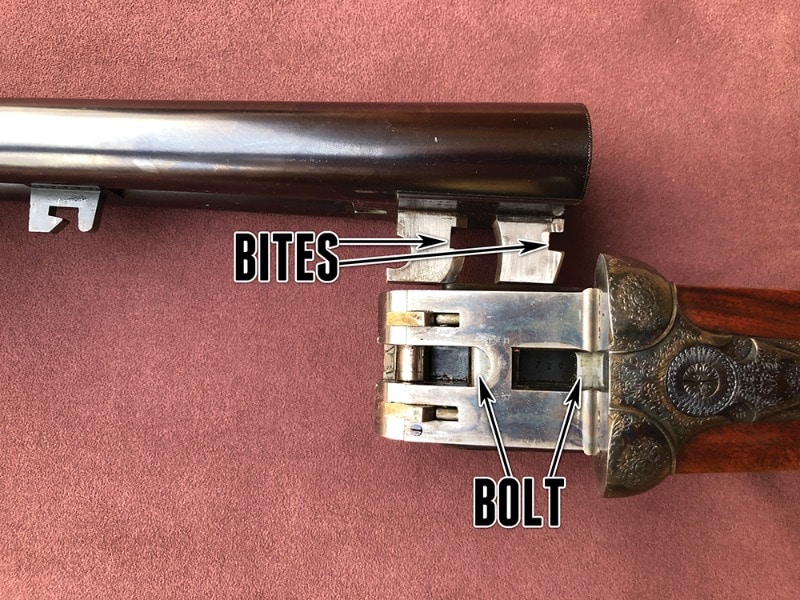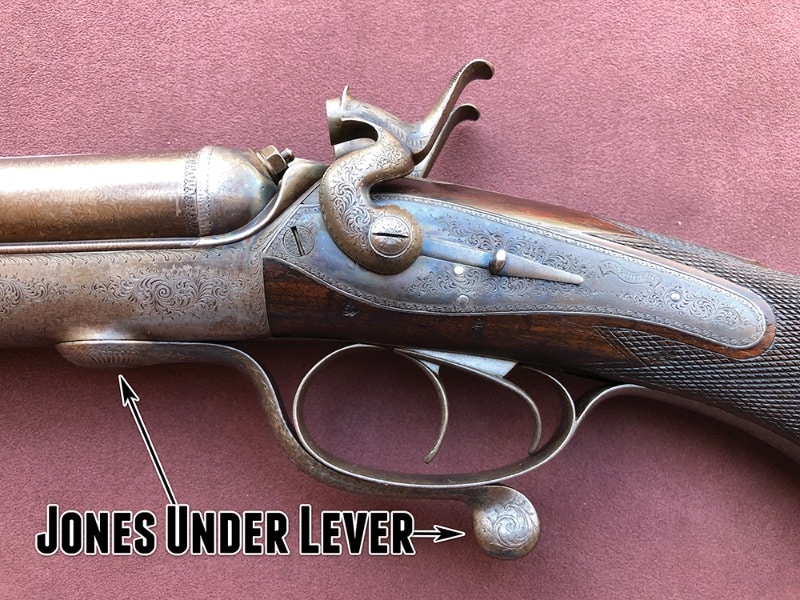Trivia: The Bolt and the Spindle

The development of modern shotgun shells, about 1860, effectively made muzzleloading guns obsolete, though they were in production for many years to come. It also required the concurrent development of breech-loading guns in which to shoot the new shells – firearms that could be conveniently opened and closed and loaded and unloaded from the breech. As no side-by-side shotguns were being produced in the United States – and as our gun industry was entirely dedicated to producing guns for the Civil War, the early development was accomplished by British gun makers. American made Parkers, Ithacas and L.C. Smiths all came later.
The English patent books tell this interesting story of development; as early as 1855, the patent office created a new category for patents called “shotguns with drop-down barrels”. Of course, that’s exactly what they do – drop down. Every patent pertaining to shotguns, rifles and handguns that ‘dropped down” to allow for cartridge insertion and removal from the breech end of the barrels is recorded in this category- and there were many.
The drawings and claims of the patents provided the answers to all of the serious questions of the day; among them: 1) how best to open a break-open

gun, 2) what do the barrels pivot on, when they drop down, 3) what keeps the barrels from opening too far, 4) how do you keep the breech closed during firing, 5) how do you engage the primer of the shell to produce firing, 6) how do you get the empty shells out?
Two of the most important developments (patents) that became world standards and continue today are the locking bolt and the top lever. Purdey's double-bite sliding bolt was simple and ingenious. The mechanism to slide the bolt back and forth was a simple, spring-loaded lever in the front of the trigger guard, pressed with the thumb. Mr. Scott’s “spindle” was also a spring-loaded lever, but it was attached to the top of the receiver. Having used many old shotguns with various levers to release the barrels, and lock them in place, I find them all quite acceptable and don’t know why the Scott’s Spindle won out over all the others – but it did.
It’s just trivia, of course, but the over/under and side-by-side shotguns we are shooting today are not much different than the ones that were developed in the 1860’s by our gunmaking friends “across the pond.”

